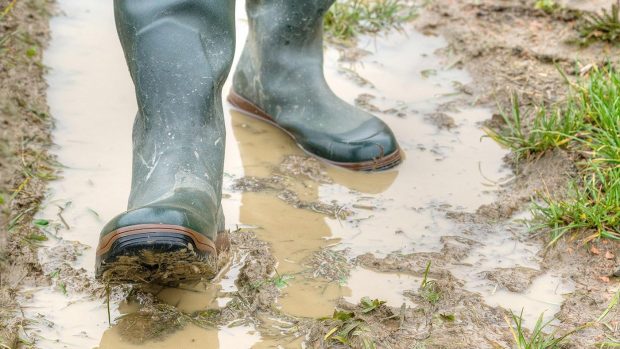Skidding across the yard on sheet ice might be a distant memory, but don’t be fooled — knee-deep mud and frozen troughs are only a matter of months away. Take a look at these nine ways to get your yard and fields in shape before the clocks go back (28 October) and the cold weather sets in.
1. Stay on your feet — stock up on salt and grit in advance as prices tend to soar during a cold snap. “People tend to order late,” explains Lucy Tate of agricultural wholesaler Armstrong Richardson. “I’d advise getting in there now. Make sure that you have the right winter equipment too, such as snow shovels for clearing the yard.”
2. Dealing with the pipes — you can protect pipes and taps to some extent by using lagging from DIY stores and old duvets as insulation, but it’s a good idea to have a back-up plan for serious cold periods. If you have a reliable indoor water supply then it might be worth investing in a special connector that allows hosepipes to run off internal taps.
3. Beat frozen troughs — insulated troughs and submersible water tank heaters can be bought at farm supply stores and are a good — if pricey — solution. A simpler and cheaper option is to keep a football floating on the surface of the water. This should prevent an ice sheet forming in all but the most bitter conditions.
4. Keep your exercise area frost-free — Nicholas Collins of equestrian surface solutions provider Martin Collins recommends keeping an eye on the weather forecast and letting it guide your arena maintenance plan. “If a surface is even slightly over-compacted then surplus water will not drain through the material as easily,” he explains. “This causes a backlog of moisture in the surface, which can then freeze.”
5. Get the most out of your maintenance machine — if you use a maintenance machine, Nicholas suggests setting the tines a quarter to a half-inch deeper than usual to help excess water disperse, ideally carrying out the process just as the frost is catching. The following morning, use a roller or rake to disrupt any ice crystals that may have formed on the surface.
6. Prevent flooding — badly draining fields can be prone to surface flooding. James Boggis of land drainage specialists White Horse Contractors suggests performing essential field maintenance before the bad weather kicks in. “All ditches should be cleared and any pipes or culverts [open drains under road] unblocked,” he advises. “Where drainage is particularly poor, a series of land drains laid laterally and running to a suitable outfall will make the affected area more usable.”
7. Prepare your grazing — James also has several tips on how to prepare your grazing for winter conditions. “The autumn is a great time to cultivate and seed grassy areas lacking vigour. Heavily trafficked areas may have become compacted over the summer, so suitable decompaction should be carried out to maintain an open soil structure. I would also advise moving feeders regularly to ensure that areas of the field are not poached during wet weather.”
8. Managing mud — extreme poaching can be managed to some extent by limiting turnout and taking a conservative approach to stocking levels during the winter months. Laying hardcore in gateways and other problem areas while the ground is still dry can help as well, while a more innovative option is to install honeycomb mats to protect the ground. “Honeycomb mats are more effective than hardcore, which tends to just disappear in muddy areas,” says John Mathews of field accessories company Fieldguard. “Now is the time to install them, when the grass is still growing. If you wait until the area is muddy then they will sink in and work less effectively.”
Continued below…

9 reasons riders love (and hate) autumn

Struggling with mud fever? Here’s what you need to know to tackle it…
9. Spot checks on stables — David Wilson, the director of Warwick Buildings, suggests carrying out a series of spot checks to make sure everything is in working order. “Pay particular attention to your roof, monitoring for any tears, as well as noting glass that needs repairing, doors that stick and blocked gutters,” he says. “If your horses have been out all summer and the stables out of use, it’s also important to look at whether the lights are still working as wires can corrode over time. Finally, remember that your stables will need treating with a proofing agent such as Stable Coat from Shedcare every two years. You should be looking to do this now before the horses come in for the winter — once the weather breaks, you’ve had it.”
For all the latest news analysis, competition reports, interviews, features and much more, don’t miss Horse & Hound magazine, on sale every Thursday.



